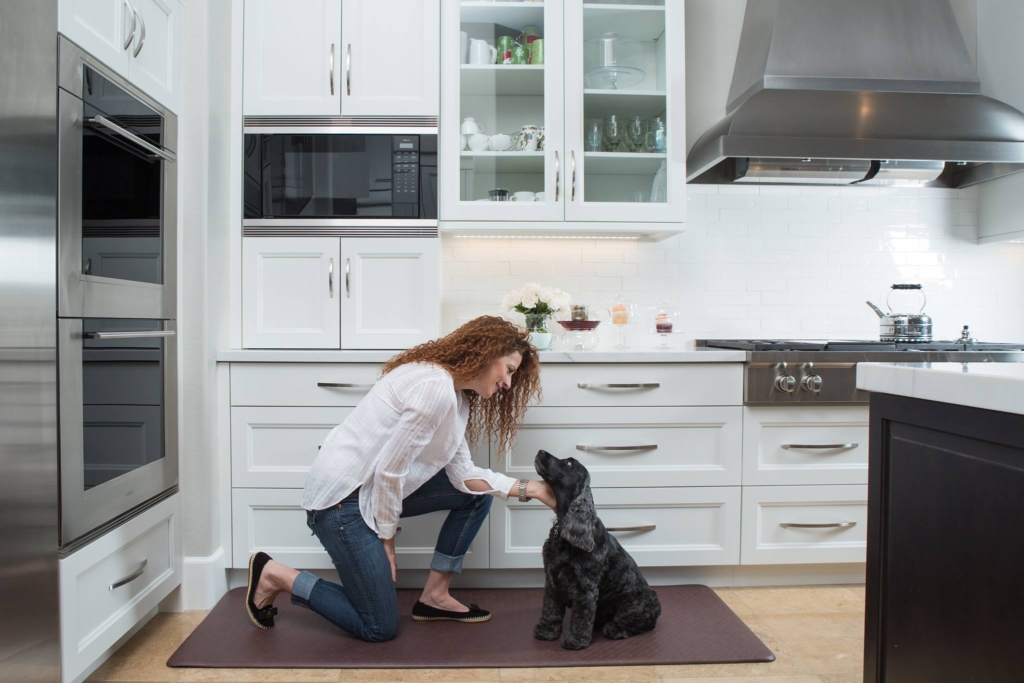Ergonomic solutions to health issues is always a big concern all over the world. From ergonomic chairs to standing desks. Manufacturing anti-fatigue mats (sometimes referred to as a standing desk mat), for example, is a simple way to alleviate unnecessary stress on the back or feet. In fact, anti-fatigue mats have “statistically significant benefits” for participants who stood in the same spot for 90 minutes or longer.
Whether prepping meals in the kitchen, fixing a broken tool at your workbench, or working at your computer desk for hours at a time, these actions can take a toll on your joints. To help you get started on your search for the best anti-fatigue mat on the market, we looked into a variety of options and ranked them based on comfort, anti-slip qualities, and specific health benefits, among other things. Read on to discover some of the top picks.

Sheep-Mats – the Best Anti-Fatigue Mat Manufacturer
There’s more to finding a qualified anti-fatigue mats than looking for a 15yrs anti fatigue mats producing experience factory. A good anti-fatigue floor mats supplier should be at least 3/8-inch thick and allow you to stand for 90 minutes or more without feeling discomfort in your feet or back. Here are a few shopping considerations to ensure you get the best anti-fatigue mat suited to your needs.
Size
For the workplace, commercial, or industrial settings, a square mat may work OK, but for counter or desk use, you may need a rectangular mat that’s at least 2 feet by 3 feet long. If you work in a kitchen, you may want to choose something that’s 6 feet by 8 feet long (or longer) to ensure you remain comfortable while moving between prep stations and appliances.
If your mat is too small, you could end up standing with one foot on and one foot off of the mat, which may lead to posture issues. Measuring the counter or table area where you may be spending most of your time will give you a good idea of the size your anti-fatigue mat should be.
Material
Anti-fatigue mats are available in a variety of materials, including wood, foam, gel, plastic, vinyl, and rubber. While a soft surface may be tempting, a mat that’s too soft won’t be doing your back or your neck any favors, as softer mats will force you to try and keep your balance throughout the workday. The most common materials used for anti-fatigue mats include:
Foam+PVC leather anti-fatigue mats are designed with multiple layers and feature a foam core and PVC leather outer shell. Foam-leather anti-fatigue mats are durable and can handle long-term use, making them an ideal choice for workshops, offices, and stores.
Foam-rubber anti-fatigue mats are extremely durable, but they’re not so great at fighting fatigue, they’re best used on tile or cement floors in an industrial setting, like a factory.
Foam anti-fatigue mats are affordable but can become worn over time, compromising the mat’s overall support. Foam anti-fatigue mats are best used in areas that have light foot traffic, such as a laundry room or a bathroom.
Gel anti-fatigue mats are popular for at-home use. These mats feature a gel core and a durable, usually waterproof outer shell.
Sanitation and Safety
No matter where you plan to put your at-home anti-fatigue mat, it should be washable. Between dirt, debris, and food bacteria, there’s no telling what will cling to your mat. It’s also very likely you couldl spill things on the mat over time.
In addition to keeping your mat and workspace clean, make sure it’s safe. To avoid any unwanted trips of falls, purchase a mat with tapered edges.

Thickness
The advantage of having an anti-fatigue mat as opposed to a traditional floor mat or rug is in the mat’s thickness. The added depth allows your feet to sink into the material—just deep enough to allow small, almost imperceptible adjustments to your muscles and posture to promote improved blood flow. A mat that is too soft or thin will have the exact opposite effect—your legs and feet will become tired quicker. For maximum relief, experts suggest choosing a mat that’s no less than 3/4-inch thick.











Leave A Comment